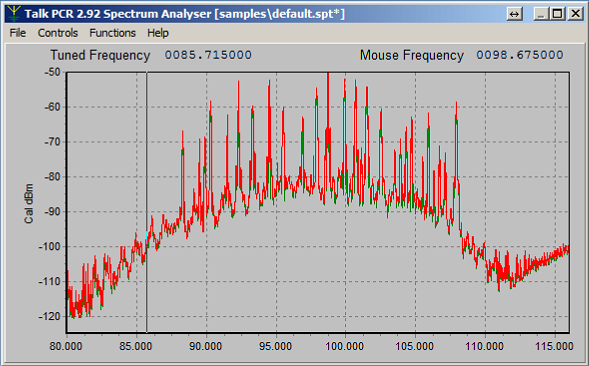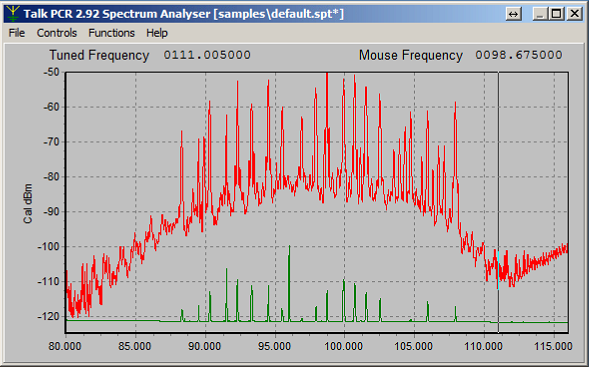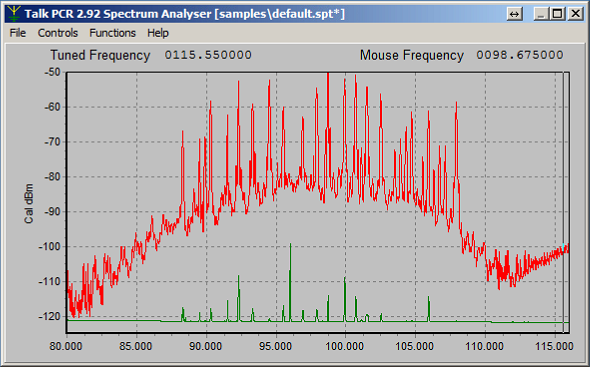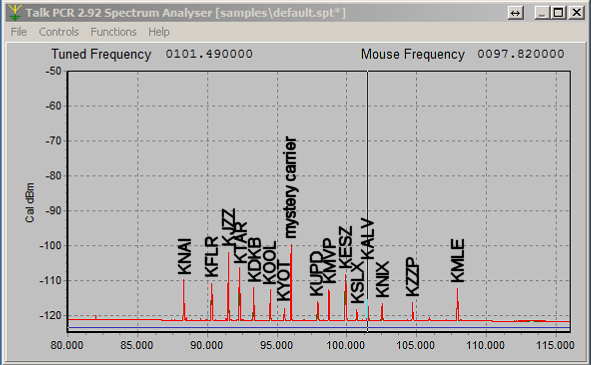The last post involved sniffing the spectrum around the house from 1 to 1300 MHz. It was obvious from the scan that the strongest signals were all in the FM broadcast band. Time to dig in a bit more and identify these culprits.
A very handy tool is radio-locator.com, which is chock-full of useful information on commercial radio stations. If you’ve never used it, I encourage you to check it out.
Sweeping the FM broadcast band again, the strongest carrier is at 98.7 MHz. This is KMVP atop South Mountain, with an effective radiated power of 97 kW. Another very strong one for me is 88.3 KNAI, located over on Shaw Butte, only 5 miles west.
Let’s now remove the antenna and replace it with a dc – 18 GHz termination. Ideally, there should be nothing but a flat line at the receiver’s noise floor. Sadly, this is not the case.
There are two pieces of LMR-240 that make up the coax run from the antenna to the shack. The first, from the shack up to the roof, is about 30′. The second, up on the roof from the cable outlet to the antenna, is about 60′. The following plot shows the reception with the second piece disconnected from the first and the termination attached to the roof end of the 30′ piece.
It appears that there’s not even 60 dB of isolation between termination on and antenna. Rats – there should be around 90 because it’s pretty good coax, and the connectors seem to be installed well. Let’s look more closely to see whether these are external or internal.
It appears that all the signals are from over-the-air transmissions, except the one around 96 MHz, doesn’t appear to correspond to any OTA signals.
Station KNAI (88.3 MHz) broadcasts from Shaw Butte, only 8 km or so west, while all the others have transmitters atop South Mountain, over the Phoenix mountains from this location. The big guns are 100 kW ERP.
In any event, it appears that my setup is somewhat leaky, with only about 60 dB through-cable loss.




